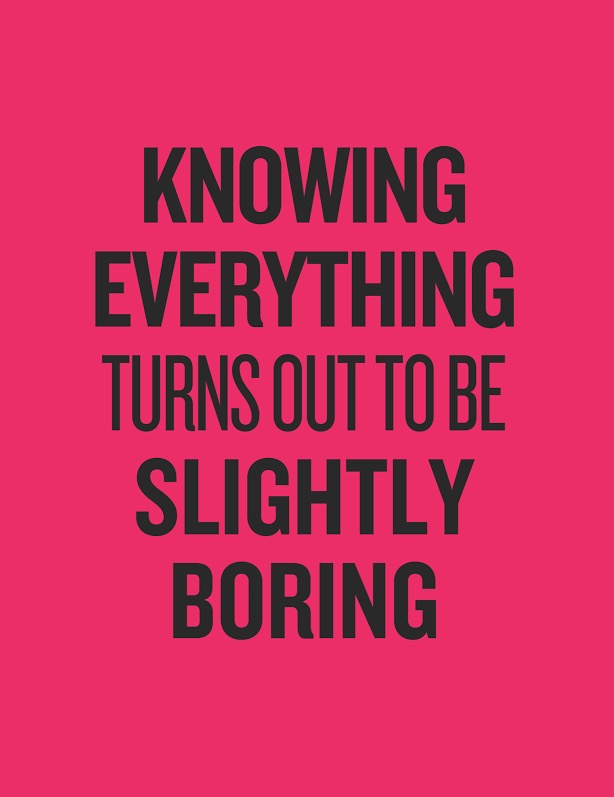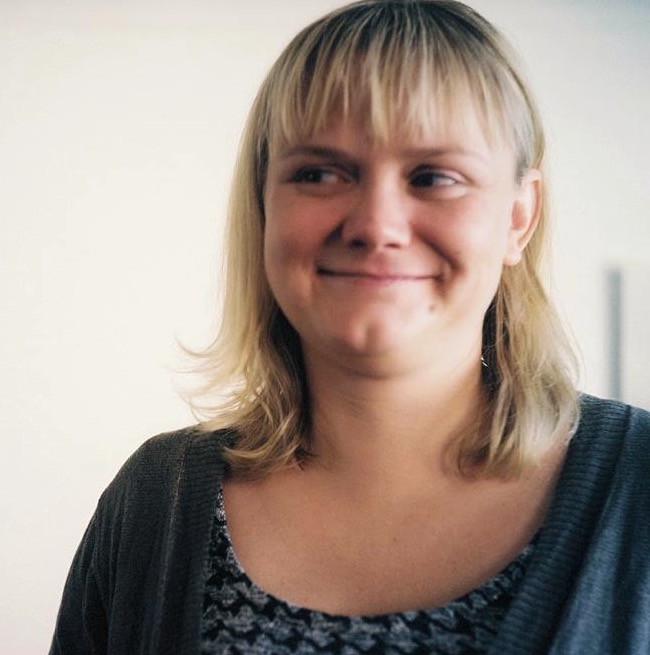
Douglas Coupland’s personal narrative
On Being Couplandesque
His first novel, the 1991 international bestseller Generation X: Tales for an Accelerated Culture, is what first drew attention to Douglas Coupland. The Canadian has actually published thirteen novels, not to mention short stories, non-fiction books, dramatic works, and screenplays. But since 2000, it is in the visual arts that he finds most solace. Employing a variety of materials in his work, a common theme is a curiosity with pop culture and 20th-century pop art, in particular the corrupting and seductive dimensions thereof. Military imagery is also interwoven, the result of growing up in a military family at the height of the Cold War, much to his chagrin.
Bit Rot is a term defining the decay of digital information. All electronic files are under constant decay. Did you know that the thousands of mp3s, xvids, and jpegs backed up on the external hard-drive, whether double-saved in Dropbox or not (and probably not viewed for years) – like our memories – do not last forever? That even what happens on the Internet is not everlasting?
[caption id="attachment_11232" align="alignnone" width="614"] Slogans for the 21st Century (detail), 2011-ongoing. Courtesy of the artist and Vancouver Art Gallery[/caption]
Slogans for the 21st Century (detail), 2011-ongoing. Courtesy of the artist and Vancouver Art Gallery[/caption]
 Slogans for the 21st Century (detail), 2011-ongoing. Courtesy of the artist and Vancouver Art Gallery[/caption]
Slogans for the 21st Century (detail), 2011-ongoing. Courtesy of the artist and Vancouver Art Gallery[/caption]
Anyway, “knowing everything turns out to be slightly boring”, quips a Douglas Coupland slogan emblazoned on a fuchsia background in Helvetica all-caps. Just one such poster amid a multi-coloured wall full of other netspeak slogans for our post-Internet brains, it barely stands out from: So. Much. Porn., Waiting For The Singularity Is Getting Dull, Too Much Information, Or I Miss Feeling Clueless…
It’s the launch of Coupland’s first solo show in Europe. Despite it being about death and destruction, the cult figure – who baptised Generation X with his eponymous 1991 novel – says it is not dystopic: “Violence is a constant in human history, endlessly reinventing itself in new forms, so you can’t really say that one year was more or less dystopic than any other.”
“I don’t think we live in a dystopia. We live in an age of hundreds of millions of people trying to put their spin on anything and everything. Depending on time zones, politics, and geography, the present is distorted in ways that can seem alarming. Remember the Grexit? Remember how important it was? It was just an overhyped blip. Part of psychic survival in the next few decades involves developing the skill to see just how short-term seemingly devastating issues actually are”, continues the self-proclaimed pessimistic optimist.
[caption id="" align="alignnone" width="1980"] The Living Internet, 2015 A kinetic room-sized sculptural tableau / Slogans for the 21st Century, 2011-present An ongoing body of statements Photo: Cassander Eeftinck-Schattenkerk © Witte de With Centre for Contemporary Art, 2015[/caption]
The Living Internet, 2015 A kinetic room-sized sculptural tableau / Slogans for the 21st Century, 2011-present An ongoing body of statements Photo: Cassander Eeftinck-Schattenkerk © Witte de With Centre for Contemporary Art, 2015[/caption]
 The Living Internet, 2015 A kinetic room-sized sculptural tableau / Slogans for the 21st Century, 2011-present An ongoing body of statements Photo: Cassander Eeftinck-Schattenkerk © Witte de With Centre for Contemporary Art, 2015[/caption]
The Living Internet, 2015 A kinetic room-sized sculptural tableau / Slogans for the 21st Century, 2011-present An ongoing body of statements Photo: Cassander Eeftinck-Schattenkerk © Witte de With Centre for Contemporary Art, 2015[/caption]
Central to the exhibition is an installation that depicts the Internet as we type something into a search engine. “I wanted to create the sensation of opening a door and looking into the Internet and searching, and to give a taste of what that actually looks like. Not data visualisation; rather, a portrait of the Internet itself.”
Created during Coupland’s residency at the Google Cultural Institute in Paris, the work comprises of rudimental, oversized polystyrene sculptures of a cat, a fist, a bust of Putin, Tetris pieces, a Lego man, a dinosaur scull, an AK47, and other popular search terms, each positioned on a hacked home-vacuum robot. Moving around randomly, collisions and juxtapositions abound, with white soccer balls scribbled with lesser random search terms bumping about in the goalless field.
“It actually takes an insane amount of work to make the interaction of the shapes appear casual. The robots are very finicky, and the mass, centre of gravity, and harmonic potential of the shapes above them has to be correct to the millimetre”, Coupland explains. “I will brag here: it took the robotics team weeks to achieve it.”
[caption id="" align="alignnone" width="1428"] CMYK Colour registration head, 2015 Acrylic on b+w photo, laminated onto canvas, 51 x 71 cm Courtesy of the artist[/caption]
CMYK Colour registration head, 2015 Acrylic on b+w photo, laminated onto canvas, 51 x 71 cm Courtesy of the artist[/caption]
 CMYK Colour registration head, 2015 Acrylic on b+w photo, laminated onto canvas, 51 x 71 cm Courtesy of the artist[/caption]
CMYK Colour registration head, 2015 Acrylic on b+w photo, laminated onto canvas, 51 x 71 cm Courtesy of the artist[/caption]
The show also includes prints with heavy Andy Warhol references (such as his hairpiece), lots of slogans, pixellations made with googly toy eyes (including a copy of 1984), as well as works from Coupland’s personal collection. Working with curator Samuel Saelemakers to create spatial conversations within his collection surprised even Coupland himself: “The thing about this show that freaked me out was the room filled with staged group photography. I had no idea I was so obsessed with pictorial depictions of societal collapse and failure.”
Compared to his chaotic, truth-is-stranger-than-fiction, culture-defining novels, Coupland-the-artist is far more restrained and literal. He collects, he doesn’t curate. It is neighbourhoods that are the future, not cities. Cardboard furniture means stiffened-paper desks, chairs, and shelves. And there is no typical day at Google.
It’s a rare moment when Coupland reveals his personal narrative, whence the Couplandesque turn emerges. “Growing up, my father was in the air force, so I was surrounded by pictures of jets and rifles on the walls, and my brother is a taxidermist, so the insides and outsides of dead things were everywhere”, he told the audience at the launch symposium. “I grew up, became an adult, and got my own place with the complete opposite of everything I grew up with. I thought I’d escaped my family’s hillbilly curse, but my friend said there’s no such thing”, pointing out all the fighter jets and military images on the walls.
[caption id="" align="alignnone" width="1392"] Warflower Number Three, 2006 Digital print Courtesy of the Daniel Faria Gallery, Toronto[/caption]
Warflower Number Three, 2006 Digital print Courtesy of the Daniel Faria Gallery, Toronto[/caption]
 Warflower Number Three, 2006 Digital print Courtesy of the Daniel Faria Gallery, Toronto[/caption]
Warflower Number Three, 2006 Digital print Courtesy of the Daniel Faria Gallery, Toronto[/caption]
This subconscious discord has always distinguished Coupland: his writing is visual and his art textual. “It depends on your genetics and whether you’re a visual thinker, a verbal thinker, or both. I’m both. The literary world is mostly filled with people who can’t, and who will never-ever medically/clinically be able to think visually. It took me a decade to figure that out, and once I did, it spooked me. I need to be around people who can think both ways. This is why I began going visual big-time, starting in 2000.”
It might also be that Coupland’s post-Internet brain is no longer hooked on the book. Since the middling reviews of Worst. Person. Ever. in 2013, he has penned three non-fiction books, including The Age of Earthquakes, published earlier this year, and has co-written with cultural critic Shumon Basar and Serpentine Gallery curator Hans Ulrich Obrist. Now, alongside the Bit Rot exhibition, a collection of short stories and essays have been published under the same name, in which he declares “goodbye to writing for the sake of writing” in the introduction.
“I have no patience for poorly framed ideas or characters”, Coupland pronounces. “And if you’re going to write fiction, please get to the point.” However, he’s quick to clarify that “it’s not a dumbing down, but there’s a lot of reformatting, and once you’re reformatted… it’s like going from Mac to PC, or learning a new language.”
As for Andy, Dag, and Claire – the main characters in Generation X, Coupland reckons they managed to escape to Mexico, known to have the worst Internet in the world. The state of their 50-something-year-old brains “remains unclear”. Perhaps it’s time to take a paperback holiday.
Bit Rot is at Witte de With, Rotterdam until 03 January 2016.
[caption id="" align="alignnone" width="1583"] Skate Marilyn, 2008 Photo: Cassander Eeftinck-Schattenkerk © Witte de With Centre for Contemporary Art, 2015[/caption]
Skate Marilyn, 2008 Photo: Cassander Eeftinck-Schattenkerk © Witte de With Centre for Contemporary Art, 2015[/caption]
 Skate Marilyn, 2008 Photo: Cassander Eeftinck-Schattenkerk © Witte de With Centre for Contemporary Art, 2015[/caption]
Skate Marilyn, 2008 Photo: Cassander Eeftinck-Schattenkerk © Witte de With Centre for Contemporary Art, 2015[/caption]

